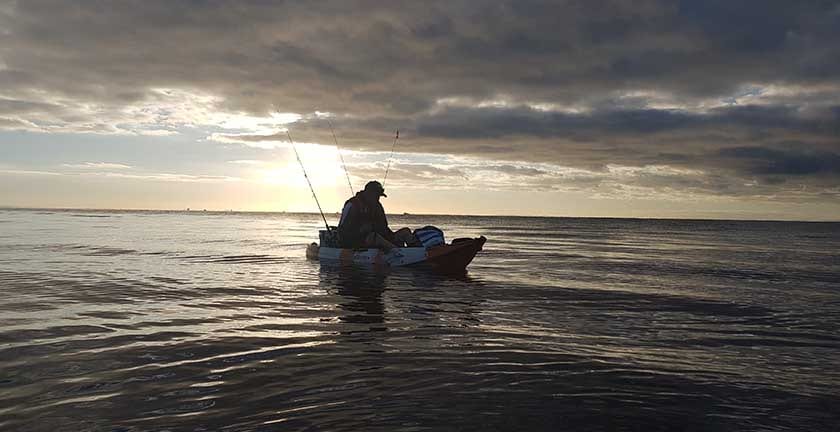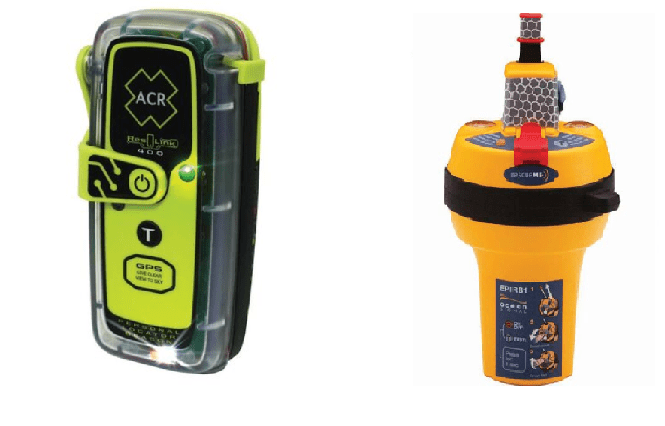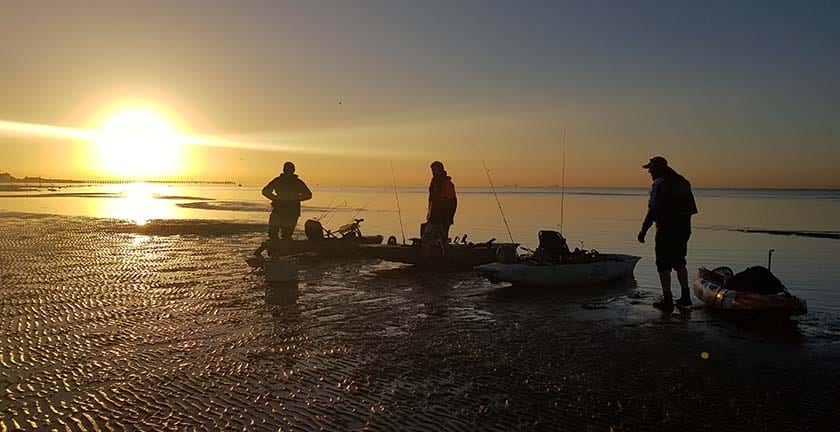Welcome to kayak fishing safety. Kayak fishing is an amazing recreational activity rapidly growing in popularity. There are however dangerous elements to kayak fishing that you need to be prepared for. If you have recently purchased a fishing kayak or thinking of buying one take some time to consider the safety tips in this article which might just save your life. Recommendations to ensure that your kayak fishing adventures are fun and safe. Here are our kayak fishing safety tips to get you started.
BECOME A FISHINGMAD MEMBER
Gain access to DETAILED FISHING WORKSHOPS | MONTHLY GIVEAWAYS | Q&A SESSIONS | WHAT’S BITING NOW REPORTS | TACKLE TALKS | KAYAK CLUB | CATCH OF THE MONTH | DISCOUNTS TO ONLINE SHOP | ADD-FREE EXPERIENCE
To ensure you are across current recommendations and guideline please find copies of the
- Paddle Safe Brochure by Maritime Safety Victoria
- Safe Sea Kayaking Guide from Maritime Safety Victoria
We recommend watching the below video which walks you through 10 kayak fishing safety tips followed by me taking out a beginner on his first kayak fishing adventure and we happen to stumble upon a huge school of salmon. It’s a great watch so make sure to subscribe to the channel if you enjoy the content.
Starting your kayak fishing journey
A great way to fast track your kayak fishing skills when starting is to go out with other experienced kayak anglers. An experienced kayak fisherman can guide you through your initial sessions on the water to build up your confidence and skills. They will be able to aid you on safe weather conditions, fishing areas with a low volume of boat traffic, safe launching practices and much more. The experience you will learn from others when starting is invaluable.
If you don’t have friends with their own fishing kayak then look to social media fishing or kayaking groups. You’re not alone, this is a rapidly growing sport and there will be lots of people in your area who are just starting their kayak fishing journey too. Use social media as a tool to connect with other kayak anglers in your area. This is also a great opportunity to make some new friends who share the same passion in your local area.
Learn how to predict safe weather conditions
Watch our detailed video guide on how to use free tools to predict safe weather conditions
Never go out in poor weather conditions and put yourself at unnecessary risk. Instead, become familiar with weather apps to aid you in understanding the weather forecast before planning your trip. Take time to learn to predict the wind strength and direction. Also, take time to learn swell patterns and how it impacts the area your fishing. Generally, the swell will flatten out when the wind is coming from behind you and going out to sea. For me, the ample conditions are winds below 10 kilometres an hour with the wind direction from behind me out to sea.
There are readily available free tools to assist you. I would highly recommend becoming familiar with the website Meteye from the Bureau of Meteorology. This is where you can forecast the wind and swell. I would also recommend weather apps such as willy weather to be used to keep an eye on wind strength, tides and rain. Once you become familiar with these apps use some common sense and know when not to launch. If you turn up to your destination and the conditions look unsafe then don’t go out in the water. You will learn this more with experience but never take unnecessary risks.
Here is a great example. I generally launch where the red dot is. You can see the winds are going from behind me out to sea which will keep the swell low. You can also see winds predicted are in the colour of white or low blue meaning low winds under 10 kilometres.

I would not be going out in conditions below. As the wind is 15-20 kilometres and the wind direction is coming from the sea which would result in a high swell.
Life Jackets ( PFD personal flotation device ) for kayak fishing safety
Life jackets or PFD’s are a mandatory safety item when kayak fishing. It may save your life from many unpredictable situations. Always wear a life jacket regardless of the weather conditions or the system you’re fishing in. Even if it’s a calm lake close to home during good weather always wear one. We would highly recommend wearing a proper fitting non-inflated life jacket. One that’s high vis with waterproof pockets and a whistle. I have been using Hobie’s range of Rock series PFD’s for several reasons. It’s a certified watersport L50 PFD Certified to Australian Standard AS4758. It is a high vis, has waterproof pockets, safety whistle, shoulder reflectors and reasonably comfortable. Most kayak PFDs start at $50 and go up to $200 we would highly recommend buying the best PFD that you can afford with the essential safety features.
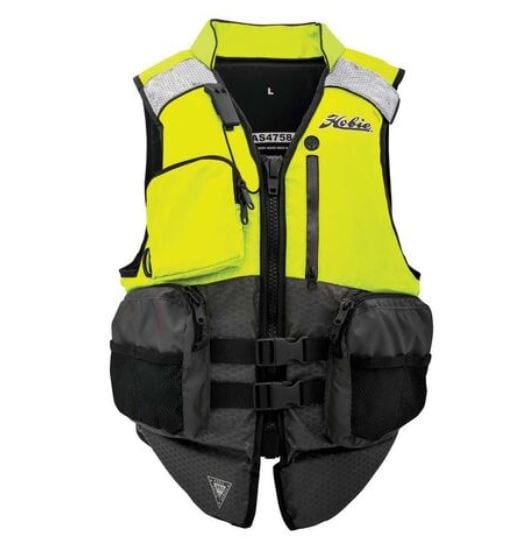
If you purchase one of the more comfortable inflatable life jackets then remember to have it serviced regularly or replaced as per manufacturers instructions. These life jackets have canisters that inflate the jacket when they sense you are in water and these need to be tested and replaced. if there not you run the risk of going overboard and having no floatation.
Did you know that there are different types of lifejackets and they have different certification levels depending on whether your fishing from a boat, kayak or jetski either inshore, offshore or on lakes? Yep, it can be quite confusing. So let’s use this opportunity to run you through the different types of life jackets and there certified usage. Maritime safety Victoria has a helpful tool to help you choose the correct website. You can find that here at Lifejacket selector tool.
Type 1 – level 100 lifejacket – A lifejacket Type 1 provides a high level of buoyancy and keeps the wearer in a safe floating position. They are made in high visibility colours with reflective patches

Type 2 – level 50 lifejacket – A lifejacket Type 2 is a buoyancy vest. It provides less buoyancy than a lifejacket Type 1 but sufficient to keep you afloat.

Type 3 – level 50S lifejacket – A lifejacket Type 3 is a buoyancy garment. It has similar buoyancy to a lifejacket Type 2 but is manufactured in a wide variety of colours and is shaped or equipped for particular activities.
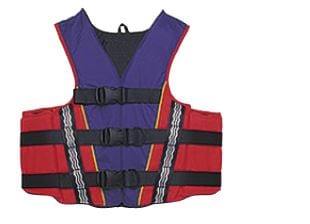
Kayak Paddle and Rod leashes
Going out into the bay or lake and losing your paddle isn’t a safe situation to be found in. I have seen several people do this and can attest to how scared they were when stuck in that vulnerable situation. Make sure you buy a paddle leash for your paddles. Most retail shops sell them for about $30 a small item but an essential one. Whilst you’re at it buy a couple of rod leashes. This may prevent you from losing a rod or two. I would know I had to learn the hard way.
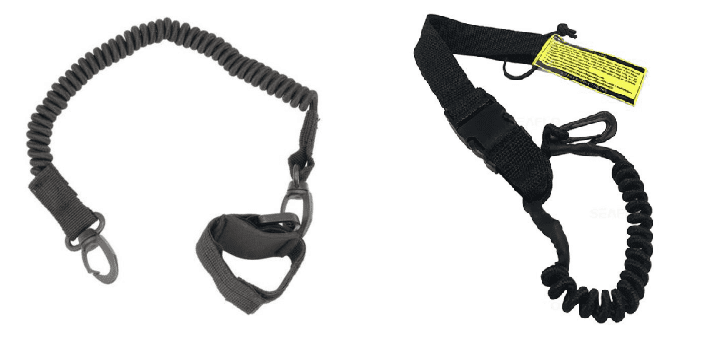
Kayak Fish Finder / Sounder
Don’t discount how important a fish finder can be on your kayak for safety. You can review the latest fish finder for your kayak. They can be a major aid in assisting understanding the water depth, the water temperature and navigating your way with a GPS tracker. Which can be very helpful in low visibility situations, where there is a high tidal flow or if your unfamiliar with the area you are fishing.
Watch the video below which demonstrates how important my Lowrance Elite Ti2 sounder was during high fog and poor visibility.
Kayak PLB and EPIRB
For those who don’t know PLB stands for Personal Locator Beacon and EPIRB stands for Emergency Position Indicating Radio Beacon. Although these devices are not mandatory they can be used to track your exact whereabouts when on the water. They can also be used to alarm emergency services that you require assistance or rescuing. A PLB is designed to be kept on the kayaker at all times whilst an EPIRB is registered to a vessel. A PLB can be used not only for kayaks but those venturing into remote areas as well.
An EPIRB alerts rescue services of watercraft in trouble by transmitting a message on the distress 406 frequency via satellite. It’s a mandatory requirement for all vessels to be fitted with an EPIRB if they go further than two nautical miles from closest mainland. PLB and EPIRBs range from $200 to $500 and should be something that you consider if you’re a serious kayak angler.
Let others know where you are and communicate on the water
The most basic safety fundamental you can achieve is informing a friend or family member. Make sure they know where your launching from, who you’re going with and what time you’re expected back. Make sure they are also aware of the predicted and any potential risks on the day.
Buy a walkie talkie and communicate with your buddies frequently. They are very affordable and can also be a lot of fun. But they’re a great way to let others know that you need assistance. I bought an Oricom walkie talkie set from Big W for only $39. This very basic PMR780 UHF2-Way Radio worked a treat and had a range up to 3 kilometres. Sure they’re not waterproof or prone to salt but they worked a treat.
Be visible to others on your kayak
Wear high visibility clothing and if possible a flag mounted on your kayak. This will help others know where you are on the water. Keep space between you and others. Especially boats and others powered vessel which will give you time to react and ensure you’re not placed in unnecessarily dangerous situations.
If you plan to go out in the dark or times of low visibility then invest in some kayak lights. These will help you navigate and allow others to see you easily. We would recommend the BerleyPro orb which retails around $190 and have IP68 LEDs orientated at 360 degrees and angled over head this can be used as either an anchor light or permanent running light on your kayak. They can be fitted directly or attached using a starport.
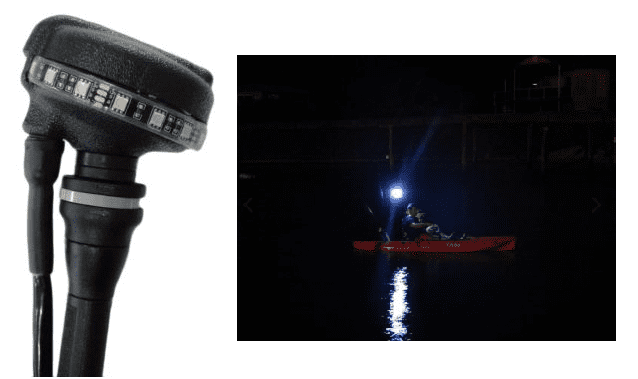
We would also recommend a flag on the rear of your kayak as a further visual aid. Good options here include the Railblaza kayak visibility kit 2 which include a flag, light, mount and pole.
Be organised on your kayak
The temptation when kayak fishing is to load up your yak full of rods. The reality is by doing this you’re making it a lot more challenging to navigate and remain organised on the water. Don’t take too many rods, and create a secure spot for sharp items such as knives, pliers and scissors. Also ensure your kayak has storage for your tackle boxes, bait and catches which will help you to remain organised. Many of my best days on the water have simple been with 1 rod and a packet of soft plastics. Its a lot less chaotic and keeps you in constant contact with the lure without distractions.
High-end kayaks such as Hobie Pro Anglers have built-in internal storage which helps greatly to stay organised. You can see that in a video of some of our recent kayak mods.
Be sun smart on your kayak
UV rays reflect strongly of the water and its easy to get sunburnt, so remember be sun smart. We would recommend always having the following items
- Hat
- Multiple UV shields for your face and neck,
- UV gloves,
- 50+ sunscreen, and a
- Ample water so you don’t become dehydrated
Try to keep as much of your skin covered as possible at all times. Often Kayakers go out and do this but then forget to cover there legs or feet when wearing shorts and end up very sunburnt.
Basic safety tips when fishing on your kayak
kayak fishing safety tips, you may want to keep extra accessories on your kayak hatch such as a portable bilge pump should your kayak take on any water.

When fishing on your kayaking and using baits instead of lures remember to keep the drag on your fishing reels set nice and loose. We have seen kayakers go overboard after hooking stingrays, banjo sharks or other large fish and not having enough time to react and loosen the drag. Also, be careful when handling anything sharp such as hooks and knives and remember to store them safely out of the way. We would also strongly advise becoming familiar with handling local fish species. basic examples include Flathead having spikes that can cause bleeding, perch having sharp gill rackers that can cause bleeding, snapper have sharp spikes and snook and leather jackets have sharp teeth. So become aware of the fish species and how to handle them. Also, become aware of pest fish species which can be dangerous to handle such as stingrays, pufferfish and sharks.
Slowly build up your capability
When beginning start slowly to build up your confidence and skillsets. Perhaps start in lakes, rivers and estuaries on calm days. Then build-up towards the bay. Practice getting back on your kayak. Even putting aside a few days in the shallows in a safe spot to pretend you have accidentally fallen off so you can practice getting yourself back on the kayak. This is a skill that takes practice., but may save your life if you capsize in cold or deep conditions. Know your own physical limitations. There is no use paddle way out if you don’t have the stamina to come back in, this is just putting yourself at risk. Always make sure you’re not to exhausted to get back to your original location or that you cant paddle through currents and tidal flows.
Additions or Corrections
Thank you for reading this article kayak fishing safety tips. You can view the existing Paddle-Safe-Paddle-Smart-brochure.
If you feel this article is missing key information or needs any corrections made. Then please let us know by emailing our team at enquiries@fishingmad.com.au with specific details in the email. There are more key safety ideas that you can look into, these 15 tips will get you started. Your skills and awareness will improve with experience, so get out there, stay safe and learn of others.

